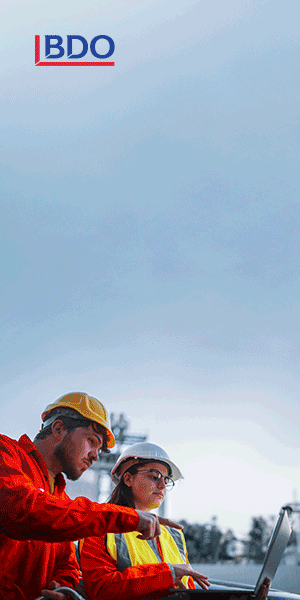Towards 3% R&D – Why business innovation is faltering by Dr John Howard

Faltering business expenditure on R&D is a major factor in Australia’s poor innovation performance. Today in our editorial series – Towards 3% R&D – Turbocharging Australia’s Innovation Effort – Dr John Howard identifies businesses’ failings. This is an edited excerpt (full paper link below).
From 1981 to 1995, Australian businesses made steady progress in lifting the proportion of R&D performed by the sector as a percentage of GDP.
When the across-the-board tariff cuts announced in 1988 came into effect, the proportion dropped and then recovered progressively, reaching the equivalent of 1.37% of GDP in 2007.
The collapse associated with the GFC pushed the proportion back to 0.92% in 2019.
The largest fall in R&D was in the Energy sector, principally by fossil fuel companies. (see main image: Government budget and tax incentive support for business R&D as a proportion of GDP 2000-2020 (%))
Some suggest that these companies moved from exploration to extraction, while another explanation is that they switched to investing in new businesses, such as alternative energy R&D — but not in Australia.
Mineral Resources R&D also declined, also suggesting that global miners have cut back on their R&D, but are conducting their R&D elsewhere.
Although the GFC hit Information and Communication Services R&D hard, there was increased R&D investment from 2012-13, while R&D investment in Commercial Services and Tourism, which includes banking and finance, fell significantly from 2015-16, recovering again from 2019-20.
Manufacturing R&D, which had recovered from the tariff cuts in the 1990s, fell by a relatively small amount after the GFC, but has taken a fall since 2019-20, suggesting a COVID-19 influence.
R&D in other industries, including Construction, Environment, and Agricultural production, is relatively small while Defence R&D has not taken on the significance it has in the US and many other countries.
Without the rapid growth in Health R&D, where CSL is a large player (pictured), the situation would be even grimmer.
Beyond the data: the imbalance in Australia’s industrial structure
Thirty-six Australian companies rank in the Forbes Global 2000.
In terms of sales, half are in the finance and retail sectors, which contain businesses not known for their R&D intensity, although the ‘Big 4 banks’ are all included in a list of the top 1,000 global R&D investors.
A further 38% are in resources, which undertake little reported R&D.
Only 10% of the Australian Forbes Global 2000 are in sectors that are usually considered to be R&D intensive—technology, medical, and manufacturing.
However, currently, there are only 16 technology intensive companies in the ASX 200. In 2022-23 these companies had a combined R&D expenditure of $3.4 billion and an R&D intensity of 11.4%.
@AuManufacturing is publishing contributions from readers for our series – Towards 3% R&D – turbocharging our national innovation effort – over a, month and in an e-Book, and we urge you to contribute. Call Peter Roberts, 0419 140679 or write to [email protected].
Six companies in the health sector reported a combined R&D expenditure of $2.9 billion with a R&D intensity of 9.6%. Eleven companies in manufacturing reported a total R&D spend of $381.6 million, with a R&D intensity of 0.55%.
Technology, health, and manufacturing are fundamental to Australia’s Industries of the Future. They are currently driving business R&D growth (see main image), but these existing players and new ones will need to grow faster to shift the needle away from reliance on the resources sector. .
An unsupportive and unstable business investment climate
Between 2008 and 2022, the policy climate for Australian business R&D was characterised by disinterested governments and confusing policy signals.
During this period, there were 14 different Ministers who had portfolio responsibilities for industry, science, and innovation and they usually ranked at the lower end of the Cabinet pecking order.
The period was characterised by a regular grab bag of new initiatives (‘funding programmes’) with very small amounts of money and very short half-lives, there were almost continuous changes to the machinery of Government (MOG) , and public service ‘efficiency dividends’ that killed off policy capability, corporate memory, and promoted transactional government-business relationships.
Underpinning these trends was the Rudd Government’s proposed Resource Super Profits Tax (RSPT), which generated significant opposition in the Minerals and Energy Sector and may also have influenced future R&D investment location decisions.
The globalisation of corporate R&D
As the world becomes increasingly interconnected and interdependent, multinational and global companies see their core skills in identifying challenges, envisioning the future, and coordinating resources to best attack the problem. In this context, they decide where and how to source R&D capability.
Decision frameworks address countries’ strengths in talent, research capacity, ease of doing business, potential partnership arrangements with universities and public research organisations, trust, and government support.
For example, in the agriculture sector, companies like Bayer, Syngenta, and BASF have global R&D programmes, and countries compete intensely to host them. In 2022, Bayer reported over 700 international collaborations, of which only twelve were in Australia.
Australia is currently uncompetitive in the global R&D attraction business and has not developed a Foreign Direct Investment (FDI) policy to attract R&D investment.
The growing sophistication and cost of digitised R&D
Business researchers, particularly medium-sized businesses with the potential to grow through R&D, often require access to sophisticated and expensive digital hardware and software to undertake and complete research projects.
The initial cost of these investments can be a significant barrier to undertaking R&D. Costs also arise in accessing testing and scale-up facilities, and the requirement for specialised skills.
In the manufacturing sector these digitally enabled technologies include high-performance computing, 3D printing, CNC machines, robots and cobots, laser cutting, IoT sensors, AI quality control systems, AR/VR systems, HPC systems, advanced metrology equipment, PLM software, CAD/CAM software, and chemical analysis and material characterisation instruments.
The impact of this barrier on business R&D is an issue worthy of further exploration, given that Australia once had an ‘access to major research facilities’ programme.
Privatisations, mergers, and acquisitions
It is likely that the privatisation of energy production and distribution corporations, particularly in NSW impacted significantly on R&D investment.
When government-owned, business enterprises tend to invest profits in R&D. When privatised, surplus profits are returned to shareholders.
The largest energy suppliers in Australia are Origin Energy, AGL Energy, and Energy Australia. None of these companies, which absorbed State-owned suppliers, mention research or R&D in their Annual Reports. In 2022, Snowy Hydro reported a $0.5 billion R&D offset.
Australian Defence Industries was privatised in 1999, passing from government ownership to the French defence company Thales. Thales undertakes research globally, locating activities where it can secure the best deals with host governments and research organisations. At this stage, not much of this R&D comes to Australia.
Recent research has suggested that privatised firms focus on a narrower set of technologies as a response to increased pressure for profitability and short-term results. Privatisation will also increase the extent to which they collaborate with external inventors, both locally and internationally.
Investor pressure for shareholder value
Publicly listed companies are constantly under pressure to maximise shareholder value, which can compromise investments in R&D. The pressure comes from shareholders, financial markets, risk-averse boards of directors, executive compensation structures, and regulatory requirements.
Capturing shareholder value has become a driving factor in the acquisition or takeover of Australian businesses by multinational corporations and private equity firms. R&D is cut back or eliminated entirely unless it offers a compelling, distinctive capability that can be nurtured locally.
Australian Boards have been interested in, and CEOs are rewarded for, increasing their share price and shareholder value. This incentivises boards to use profits for share buybacks rather than global growth through R&D.
Reversing the slide in Australia’s R&D will involve addressing these underlying causes. Recent advocacy for lifting R&D has only addressed symptoms of the problem and made the task look easy.
Dr John Howard is an experienced policy analyst focused on science, technology, innovation (STI) policy and practice, industrial policy, management strategy, university-industry engagement, and regional innovation ecosystems. Dr Howard is Executive Director, Acton Institute for Policy Research and Innovation and Visiting Professor, UTS Institute for Public Policy and Governance.
Download Dr Howard’s full paper Why business expenditure on R&D has collapsed with graphs and notes here:
Why business expenditure on R&D has collapsedbyDrJohnHoward v3
Image: Dr John Howard/Government budget and tax incentive support for business R&D as a proportion of GDP 2000-2020 (%), Source OECD
This series is brought to you through the support of our principal sponsor, public accounting, tax, consulting and business advisory BDO, and R&D tax incentive consultancy Michael Johnson Associates.
Further reading:
Towards 3% R&D – Boosting industry and research collaboration, by Dr Tony Peacock
Towards 3% R&D – The Statistics Do Not Lie By Dr John Howard
Towards 3% R&D – the role of industry policy by Roy Green
Towards 3% R&D – continuous improvement in manufacturing by Serena Ross
Towards 3% R&D – Australia’s climate opportunity by Dr Katherine Woodthorpe
Towards 3% R&D – Tax incentive is alive and kicking by Kris Gale
@aumanufacturing Sections
Analysis and Commentary Awards Defence Manufacturing News Podcast Technology Videos











